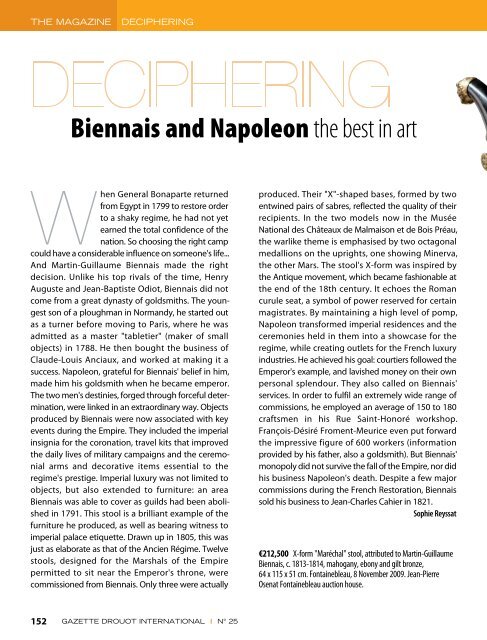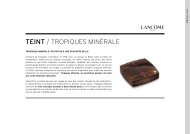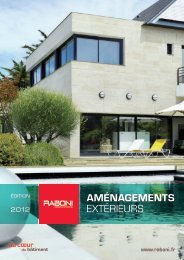Art Market Magazine - Visit zone-secure.net
Art Market Magazine - Visit zone-secure.net
Art Market Magazine - Visit zone-secure.net
You also want an ePaper? Increase the reach of your titles
YUMPU automatically turns print PDFs into web optimized ePapers that Google loves.
THE MAGAZINE DECIPHERING<br />
Biennais and Napoleon the best in art<br />
When General Bonaparte returned<br />
from Egypt in 1799 to restore order<br />
to a shaky regime, he had not yet<br />
earned the total confidence of the<br />
nation. So choosing the right camp<br />
could have a considerable influence on someone's life...<br />
And Martin-Guillaume Biennais made the right<br />
decision. Unlike his top rivals of the time, Henry<br />
Auguste and Jean-Baptiste Odiot, Biennais did not<br />
come from a great dynasty of goldsmiths. The youngest<br />
son of a ploughman in Normandy, he started out<br />
as a turner before moving to Paris, where he was<br />
admitted as a master "tabletier" (maker of small<br />
objects) in 1788. He then bought the business of<br />
Claude-Louis Anciaux, and worked at making it a<br />
success. Napoleon, grateful for Biennais' belief in him,<br />
made him his goldsmith when he became emperor.<br />
The two men's destinies, forged through forceful determination,<br />
were linked in an extraordinary way. Objects<br />
produced by Biennais were now associated with key<br />
events during the Empire. They included the imperial<br />
insignia for the coronation, travel kits that improved<br />
the daily lives of military campaigns and the ceremonial<br />
arms and decorative items essential to the<br />
regime's prestige. Imperial luxury was not limited to<br />
objects, but also extended to furniture: an area<br />
Biennais was able to cover as guilds had been abolished<br />
in 1791. This stool is a brilliant example of the<br />
furniture he produced, as well as bearing witness to<br />
imperial palace etiquette. Drawn up in 1805, this was<br />
just as elaborate as that of the Ancien Régime. Twelve<br />
stools, designed for the Marshals of the Empire<br />
permitted to sit near the Emperor's throne, were<br />
commissioned from Biennais. Only three were actually<br />
152 GAZETTE DROUOT INTERNATIONAL I N° 25<br />
produced. Their "X"-shaped bases, formed by two<br />
entwined pairs of sabres, reflected the quality of their<br />
recipients. In the two models now in the Musée<br />
National des Châteaux de Malmaison et de Bois Préau,<br />
the warlike theme is emphasised by two octagonal<br />
medallions on the uprights, one showing Minerva,<br />
the other Mars. The stool's X-form was inspired by<br />
the Antique movement, which became fashionable at<br />
the end of the 18th century. It echoes the Roman<br />
curule seat, a symbol of power reserved for certain<br />
magistrates. By maintaining a high level of pomp,<br />
Napoleon transformed imperial residences and the<br />
ceremonies held in them into a showcase for the<br />
regime, while creating outlets for the French luxury<br />
industries. He achieved his goal: courtiers followed the<br />
Emperor's example, and lavished money on their own<br />
personal splendour. They also called on Biennais'<br />
services. In order to fulfil an extremely wide range of<br />
commissions, he employed an average of 150 to 180<br />
craftsmen in his Rue Saint-Honoré workshop.<br />
François-Désiré Froment-Meurice even put forward<br />
the impressive figure of 600 workers (information<br />
provided by his father, also a goldsmith). But Biennais'<br />
monopoly did not survive the fall of the Empire, nor did<br />
his business Napoleon's death. Despite a few major<br />
commissions during the French Restoration, Biennais<br />
sold his business to Jean-Charles Cahier in 1821.<br />
Sophie Reyssat<br />
€212,500 X-form "Maréchal" stool, attributed to Martin-Guillaume<br />
Biennais, c. 1813-1814, mahogany, ebony and gilt bronze,<br />
64 x 115 x 51 cm. Fontainebleau, 8 November 2009. Jean-Pierre<br />
Osenat Fontainebleau auction house.
















